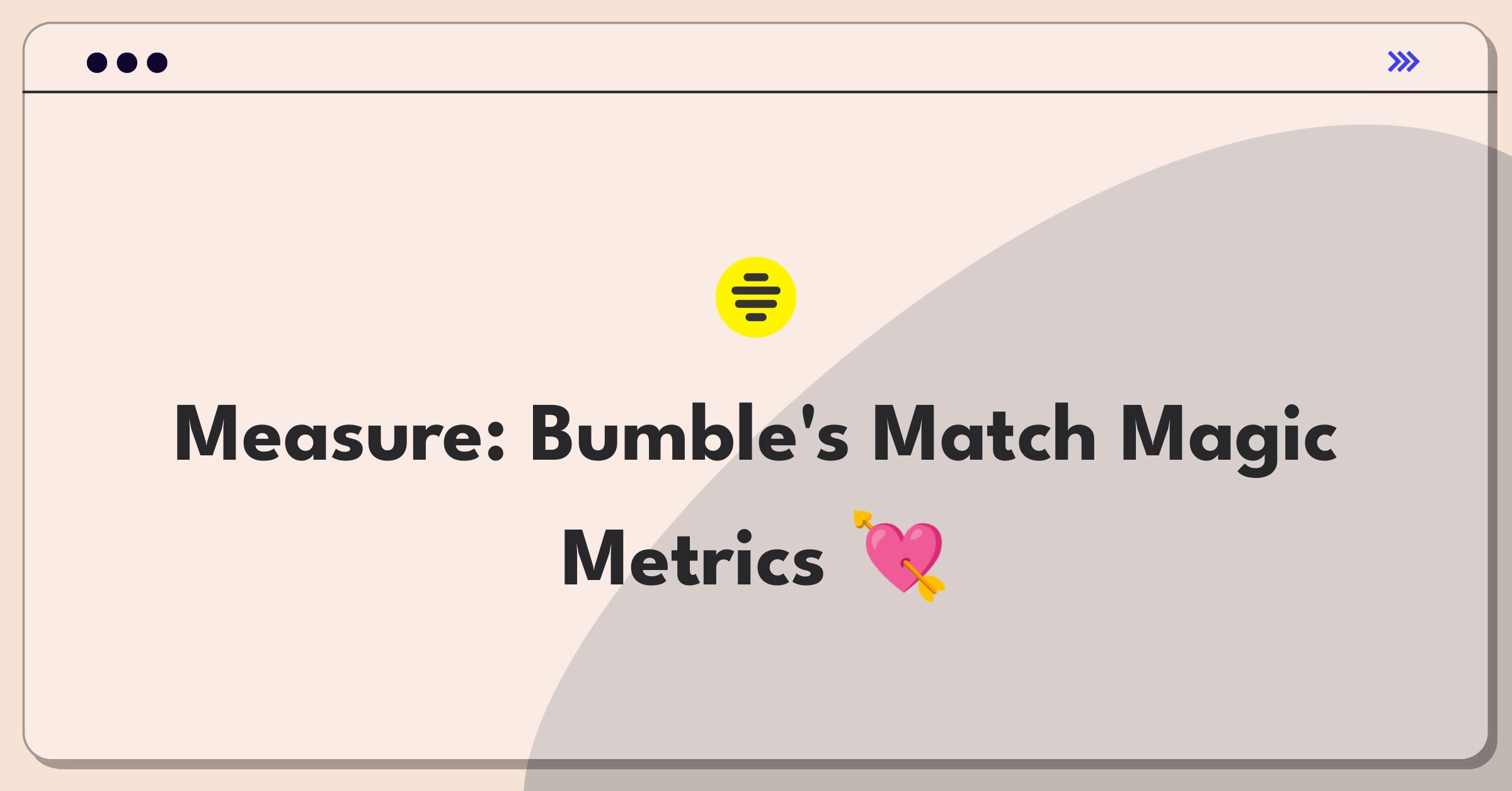Introduction
Measuring the success of Bumble's match-making algorithm is crucial for optimizing user experiences and driving business growth in the competitive online dating market. To approach this product success metrics problem effectively, I'll follow a structured framework that covers core metrics, supporting indicators, and risk factors while considering all key stakeholders.
Framework Overview
I'll follow a simple success metrics framework covering product context, success metrics hierarchy.
Step 1
Product Context
Bumble's match-making algorithm is a core feature of the dating app that aims to connect compatible users based on various factors such as preferences, interests, and behavior patterns. The key stakeholders include:
- Users: Seeking meaningful connections and relationships
- Bumble: Aiming to increase user engagement, retention, and monetization
- Advertisers: Looking for targeted audience reach
- Investors: Expecting growth and profitability
User flow:
- Profile creation: Users input personal information, preferences, and photos
- Swiping: Users view potential matches and swipe right (like) or left (pass)
- Matching: When two users mutually like each other, a match is created
- Messaging: In heterosexual matches, women initiate conversations within 24 hours
Bumble's algorithm fits into the company's broader strategy of empowering women in dating and fostering meaningful connections. Compared to competitors like Tinder, Bumble differentiates itself with its women-message-first approach and focus on safety and respect.
Product Lifecycle Stage: Mature - Bumble is an established player in the dating app market, focusing on refining its algorithm and expanding into new markets and demographics.
Subscribe to access the full answer
Monthly Plan
The perfect plan for PMs who are in the final leg of their interview preparation
$99 /month
- Access to 8,000+ PM Questions
- 10 AI resume reviews credits
- Access to company guides
- Basic email support
- Access to community Q&A
Yearly Plan
The ultimate plan for aspiring PMs, SPMs and those preparing for big-tech
$99 $33 /month
- Everything in monthly plan
- Priority queue for AI resume review
- Monthly/Weekly newsletters
- Access to premium features
- Priority response to requested question


.png)